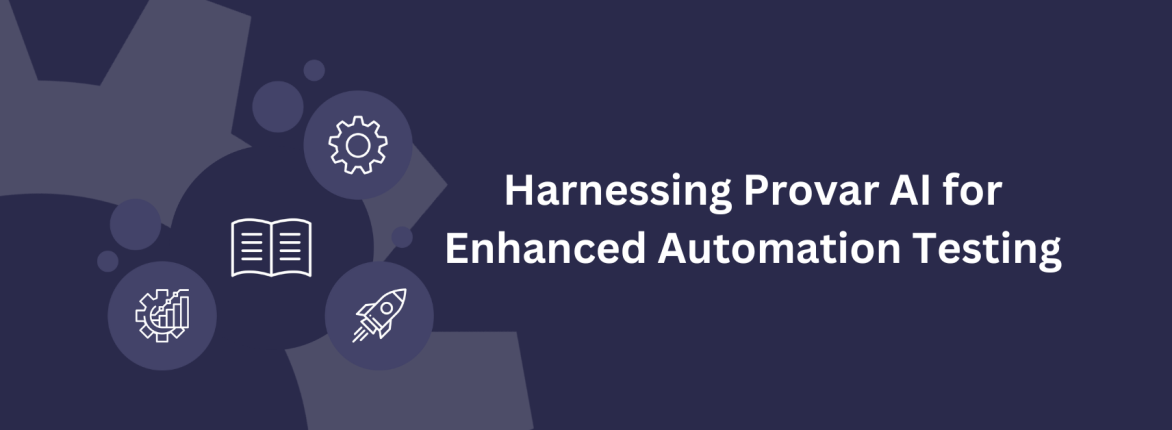Salesforce, the world’s leading CRM platform, has consistently driven innovation in the industry. One of the most significant advancements in recent years is the introduction of Lightning Web Components (LWC) in 2018.
This modern UI framework has transformed the way developers create web components on the Salesforce platform, offering numerous benefits, but also presenting unique testing challenges.
In this blog post, we will explore the fundamentals of LWC, the difficulties involved in testing these components, and how Provar’s comprehensive automation solutions can help overcome these obstacles. Let’s get started!
Understanding LWC (Lightning Web Components)
LWC represents a revolutionary approach to building web applications on Salesforce. Based on standard web technologies such as HTML, JavaScript, and CSS, LWC provides a streamlined and efficient method for developing reusable components. This framework allows developers to leverage their existing web development skills, reducing the need for specialized knowledge of the Aura framework.
The core advantage of LWC lies in its adherence to the Web Components standard. This ensures that components are encapsulated and modular, promoting reusability and maintainability. LWC seamlessly integrates with the Salesforce ecosystem, enabling developers to create dynamic user interfaces, custom pages, and responsive applications with ease.
The Challenges of Testing LWC
Despite its numerous benefits, testing LWC can be complex and challenging. These challenges stem from the intricate nature of LWC and the unique requirements of testing within the Salesforce environment.
Here are some of the challenges in testing these components.
Complex Interactions
LWC often involves multiple interconnected components that interact dynamically. Testing these interactions requires setting up comprehensive test scenarios that can handle the complexity of these relationships. Ensuring that tests remain reliable and repeatable amidst this complexity can be a daunting task.
Locator Limitations
Traditional XPath and CSS locators often fall short when dealing with LWCs. The encapsulation provided by the Shadow DOM, which is a key feature of web components, makes elements private and inaccessible to these locators. This can lead to test failures and increased maintenance efforts.
Steep Learning Curve
For testers and developers new to LWC, the learning curve can be steep. Understanding the intricacies of LWC and developing effective testing strategies requires a significant investment in time and effort. This can be particularly challenging for teams with limited experience in web component testing.
How Provar Simplifies LWC Testing
Provar has developed a suite of automated testing solutions tailored specifically for Salesforce, addressing the unique challenges of LWC testing. Provar Automation leverages Salesforce’s metadata to create robust and maintainable tests, ensuring high reliability and efficiency.
Adaptive and Resilient Automation
Provar Automation is designed to adapt to the frequent changes in Salesforce components. As Salesforce updates its platform, Provar Automation automatically adjusts, ensuring that your tests remain functional without requiring manual intervention. This adaptability reduces the risk of test failures due to platform changes.
Eliminating Manual Element Mapping
Manual web element mapping can lead to brittle tests and increased maintenance overhead. Provar Automation abstracts the internal details of Salesforce components by using the information found within its metadata, allowing your tests to target the correct elements consistently. This abstraction layer simplifies the testing process and enhances the reliability of your tests.
Comprehensive Testing Strategy
Provar Automation enables you to manage classic components, LWCs, and custom components within a unified testing framework. This holistic approach ensures that your testing strategy covers all aspects of your Salesforce application, providing a stable foundation even as the platform evolves.
Provar’s Approach to LWC Testing
Provar’s approach to LWC testing incorporates several key features that enhance your testing strategy and streamline your testing efforts. Here are some of them.
Standardized Abstraction Layer
Provar Automation abstracts the complexities of Salesforce components, shielding your tests from the intricate details of their inner workings. This standardized abstraction layer simplifies script maintenance and ensures consistent test performance.
Automatic Adaptation to Changes
As Salesforce components evolve, Provar Automation automatically adapts to these changes, ensuring that your tests continue to function flawlessly. This automatic adaptation minimizes the need for manual updates and reduces the risk of test failures.
Robust and Resilient Automation
By eliminating the need for manual web element mapping, Provar Automation reduces the likelihood of brittle tests and unexpected failures. This robust automation framework ensures that your tests remain reliable and resilient, even as the underlying components change.
Increased Efficiency and Productivity
Provar Automation allows you to focus on efficient testing by minimizing the need for constant script maintenance. This increased efficiency enables your team to achieve more with less effort, streamlining your overall testing process and enhancing productivity.
Conclusion
Since its inception in 2014, Provar has been a pioneer in Salesforce test automation and quality management. Provar Automation’s powerful features are designed to help testing teams overcome the complexities associated with testing Salesforce Lightning Web Components. By leveraging Provar’s advanced automation tools, organizations can streamline their testing efforts, ensuring reliable and efficient outcomes. Get started today by connecting with a Provar team member to discuss your team’s unique needs!
Want to learn more about how Provar can support your Salesforce Lightning Web Component testing needs? Connect with an expert today!










